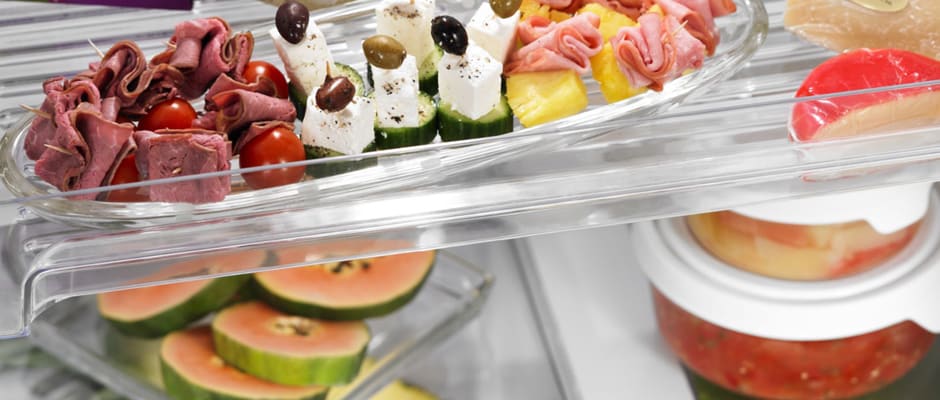Pros
Cons
Introduction
Front
{{section_header}}{{section.name}}{{/section_header}}
There's a freezer on the top and a fridge underneath. The glossy white finish gives it an updated look, though it is less likely to hide fingerprints.
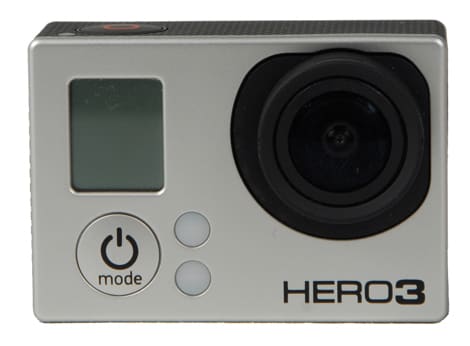
There's a single control for the fridge at the top of the fridge compartment. That control determines the temperature of both the fridge and the freezer, so you may find one compartment is at the mercy of the other.

A plain white handle matches nicely with the glossy finish.

Interior
{{section_header}}{{section.name}}{{/section_header}}
Inside, Whirlpool has updated the refrigerator interior they've been using for decades, with sleeker clear plastic shelves on the doors.
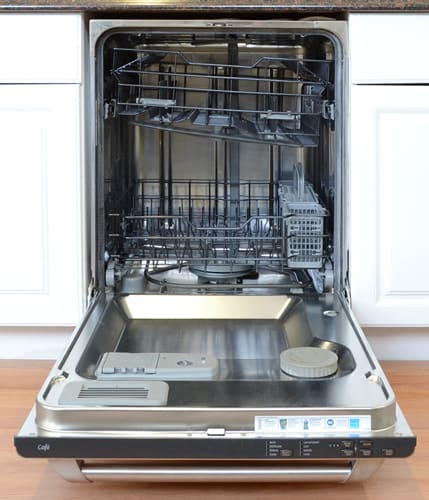
The interior of the CDWT980VSS.
Large glass shelves span the whole width of the fridge. Unlike fridges with half-width shelves, they don't offer many options for different interior configurations. There's a drawer underneath one shelf, and crispers at the bottom.
The refrigerator door features small, adjustable plastic shelves, a dairy drawer and a small storage space.
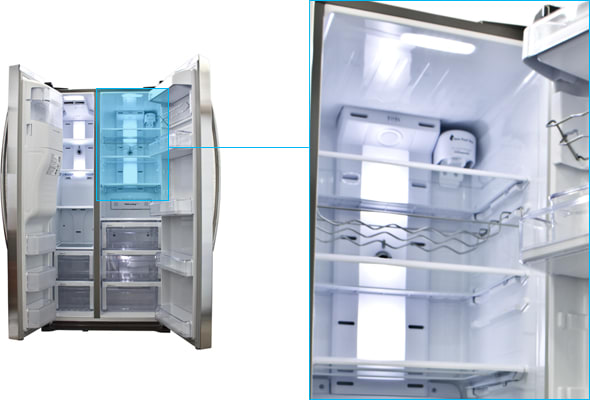
Upstairs, there's a single shelf with a vent for the freezer. There's no icemaker, and the shelves aren't adjustable.
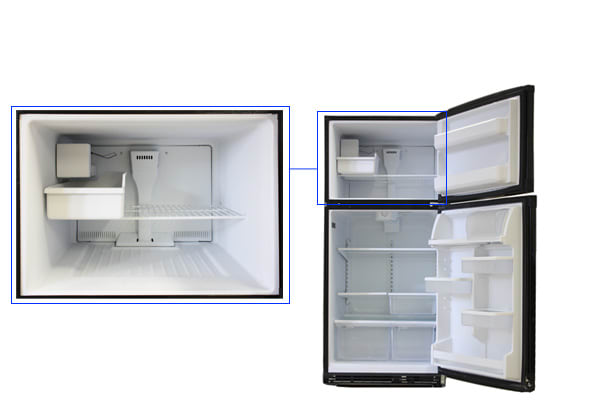
Back
{{section_header}}{{section.name}}{{/section_header}}
There's nothing on the back of the fridge except for vents.
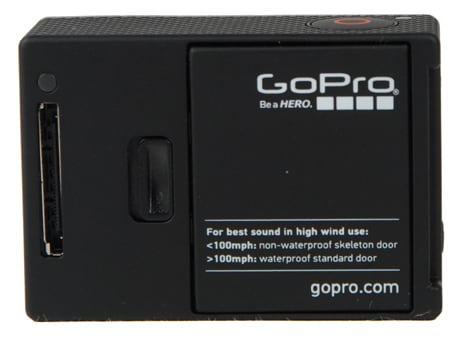
Sides
{{section_header}}{{section.name}}{{/section_header}}
There's nothing on the side of the fridge. It's white, so it'll match the rest of your white appliances.
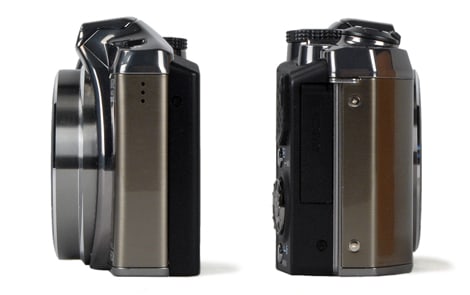
Olympus SZ-31MR iHS side views
Running Cost
{{section_header}}{{section.name}}{{/section_header}}
The {{product.name}}'s compressor cycled on and off infrequently. When it came on, it used quite a bit of energy, but that was balanced by periods of almost no energy use. In total, the {{product.name}} would cost about $32.66 to run in an average year, assuming that power sells for 9.1/kW-hr where you are. That's pretty low for a fridge.
Power Use Per Cu Ft
{{section_header}}{{section.name}}{{/section_header}}
So we can compare fridges equally, we divide out power use over a fridge's measured internal capacity. This one uses just 0.06 kWh to cool a single cubic foot. That's very efficient, regardless of how large a fridge is.
Fridge Temperature
{{section_header}}{{section.name}}{{/section_header}}
On its recommended setting, the {{product.name}}'s fridge ran warm. That's a consequence of the single temperature control for fridge and freezer. If we'd bumped up the temperature in the fridge, the freezer would've been too cold.
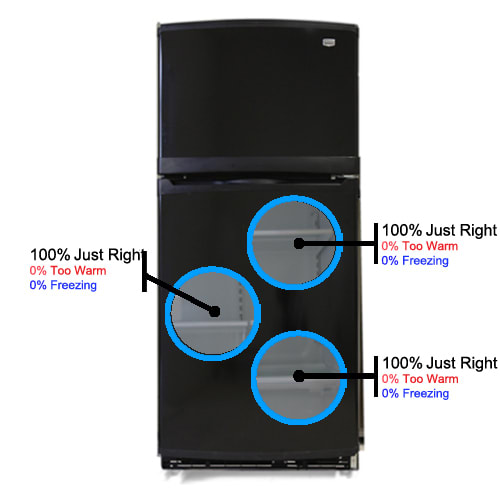
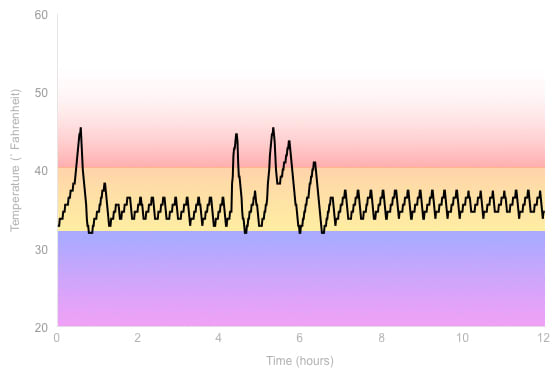
The fridge did prove to keep food remarkably consistent in temperature. We measured the temperature at the top, middle and bottom of the fridge and found there to be no hot or cold spots where air didn't flow. On each shelf, food stayed very close to a constant temperature, rarely moving more than a half a degree up or down.
Freezer Temperature
{{section_header}}{{section.name}}{{/section_header}}
Up top, the freezer did a great job keeping food consistently cold, barely varying more than a degree between top and bottom shelves.
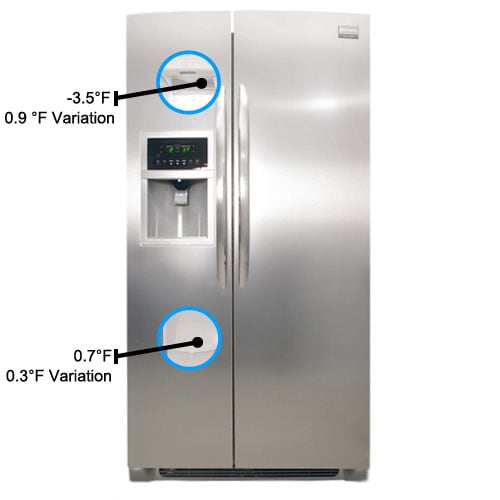
Temperatures also didn't vary over time. Consistency is very important in a freezer, as constant changes in temperature can cause freezer burn and ruin food.
Vegetable Drawer
{{section_header}}{{section.name}}{{/section_header}}
A vegetable drawer is meant to keep its contents at a constant humidity, but that's not always the case. Over the course of four days, we measured how much water a synthetic vegetable lost inside the {{product.name}}'s vegetable drawer, and found it to be about 0.19 grams of water per hour. That's about average for a fridge, but it means your vegetables may dry out fairly soon.
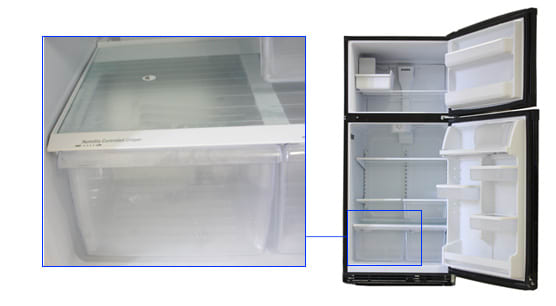
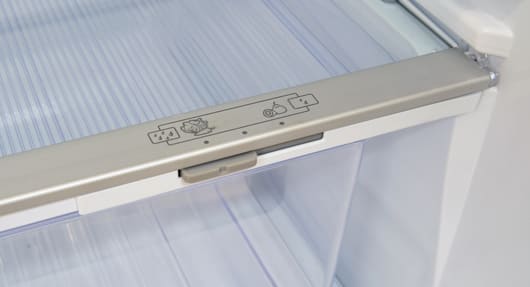
Power Loss
{{section_header}}{{section.name}}{{/section_header}}
The average American has about $800 worth of food in their fridge at any given time. When the power goes out, you don't want to lose all the food that you're storing. After 36 hours, food inside the {{product.name}}'s freezer was still frozen, which proves this is a well-insulated appliance.
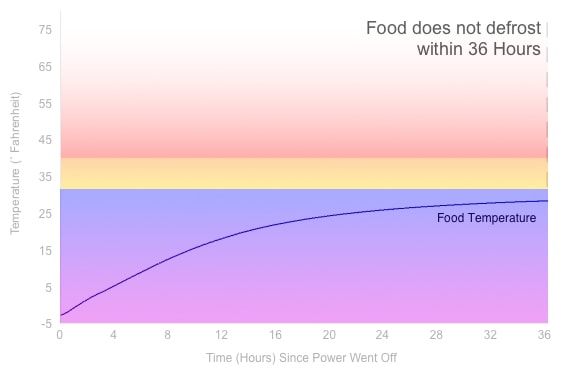
Freezing Performance
{{section_header}}{{section.name}}{{/section_header}}
"Flash Freezing" ensures that food goes from room temperature to frozen as quickly as possible to prevent ice crystals from forming, which may affect taste when the food is thawed. The {{product.name}} took just an hour and fifteen minutes to freeze food from room temperature, which is pretty impressive.

Usable Space
{{section_header}}{{section.name}}{{/section_header}}
While not very customizable, the interior of the fridge has wide shelves and a few drawers for storing smaller items that would otherwise get lost in such a cavernous space.
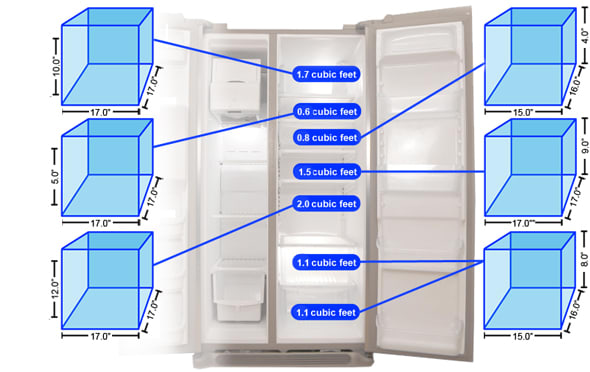
On the door, there's room for butter and tall bottles. We recommend storing them here, since the interior shelves aren't that easy to adjust.
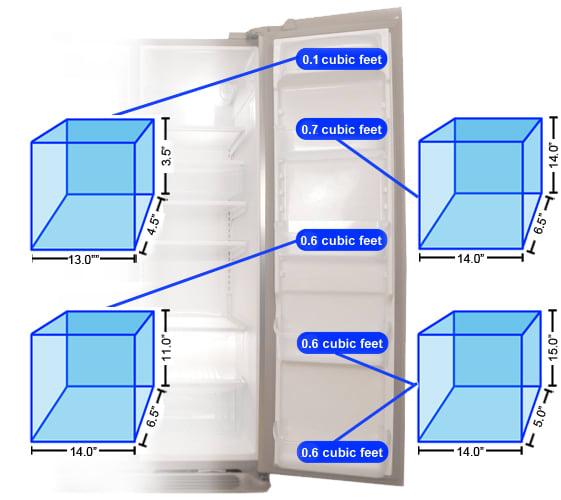
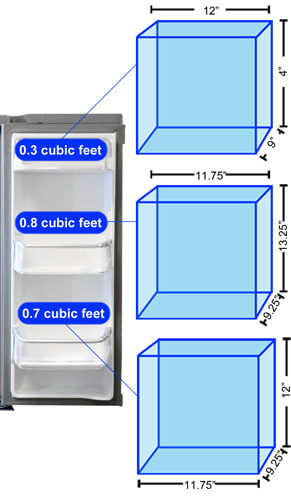
In the freezer, there aren't too many options. A single wire shelf bisects the interior, and it can't be adjusted.
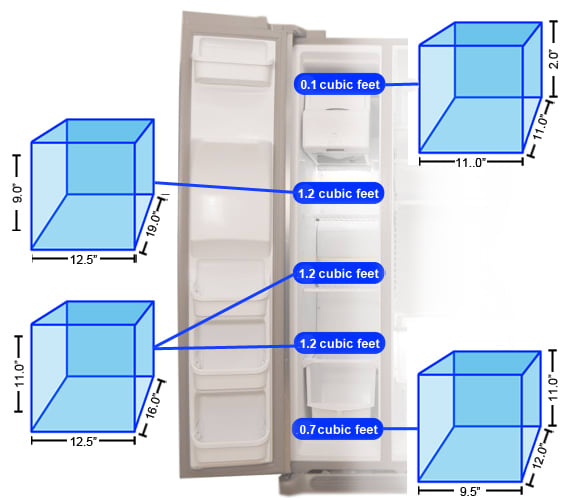
The freezer door has two fixed plastic shelves.
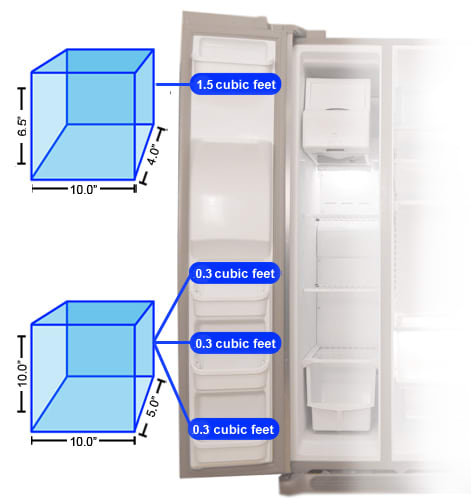
Below are the manufacturers own figures for capacity, and our own measurements for usable capacity. The manufacturers figures do not take account of the shelves, drawers and other removable features, but our measurements do account for the space these take up.
Ease of Access
{{section_header}}{{section.name}}{{/section_header}}
The heavy, wide glass shelves are difficult to adjust. It may be difficult for those with limited mobility to reach down and get items at the rear of lower shelves.
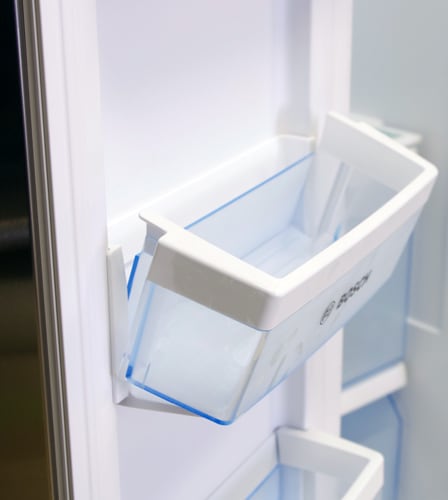
Controls
{{section_header}}{{section.name}}{{/section_header}}
There's a single control for the fridge at the top of the fridge compartment. That control determines the temperature of both the fridge and the freezer, so you may find one compartment is at the mercy of the other.
There's a single control on this fridge. It controls both the temperature of the refrigerator and freezer, and doesn't have any corresponding temperature scale. We calibrated our model at the "recommended" setting.

Cleaning
Noise
Conclusion
Energy Efficiency
The {{product.name}} proved extremely efficient for a fridge of any size, with a compressor that stayed off most of the time.
Performance
In both the fridge and freezer, temperatures remained consistent over time and throughout the refrigerator. Our only complaint? It was impossible to adjust both the fridge and freezer to be at optimal temperatures with a single control for both.
Storage Space
Wide shelves provide ample storage space, but also lots of room for food to get lost. There's not a ton of flexibility when it comes to arranging shelves.
Usability
Interior shelves are heavy, and ridged walled shelves are great places for dirt and spills to collect.
Meet the tester
Keith was the Editor in Chief of Reviewed's appliance and automotive sites. His work has appeared in publications such as Wired, Car & Driver, and CityLab.
Checking our work.
Our team is here to help you buy the best stuff and love what you own. Our writers, editors, and experts obsess over the products we cover to make sure you're confident and satisfied. Have a different opinion about something we recommend? Email us and we'll compare notes.
Shoot us an email
